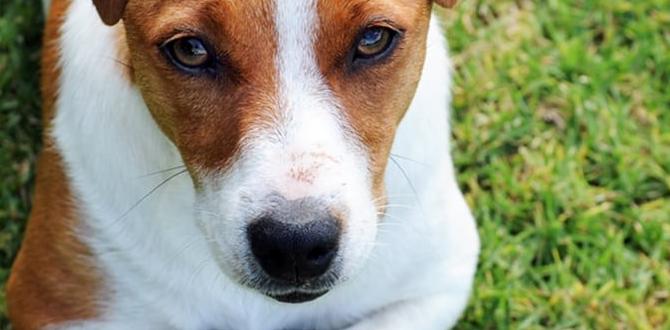Understanding and Managing Canine Dominance Dynamics
Understanding and managing canine dominance issues techniques is a journey many dog owners embark on, seeking to foster a harmonious and well-behaved relationship with their furry companions. While the concept of dominance can sometimes be misconstrued, it’s essential to approach canine behavior with a nuanced perspective. Instead of viewing dominance as a rigid hierarchy where dogs constantly strive to be “top dog,” it’s more helpful to think of it as a dynamic of influence and resource control within the social structure. This understanding forms the bedrock for effective training and a stronger bond between you and your dog.
The notion of “alpha” or “pack leader” has often been popularized, leading to some outdated and potentially harmful training methods. Modern ethology and canine behavior science suggest that focusing on clear communication, consistent leadership, and positive reinforcement yields far more sustainable and humane results. These approaches build trust and mutual respect, rather than relying on intimidation or punishment. Therefore, when we talk about “dominance techniques” in the modern context, we are referring to the strategies and principles that allow you to effectively guide your dog’s behavior, manage resources, and establish clear expectations, ensuring their safety and well-being within your household.
The Evolution of Dominance Theory in Dog Training
Historically, dog training was heavily influenced by wolf pack studies. Researchers observed that in wolf packs, there was a clear hierarchy with an alpha pair leading. This observation was then extrapolated to domestic dogs, leading to the popular “alpha roll” and other confrontation-based methods. The idea was that owners needed to assert their dominance physically to prevent their dogs from becoming unruly or aggressive. However, more recent and extensive research into wolf behavior has revealed that these pack structures are often more fluid and less confrontational than previously believed, especially in the wild. Furthermore, domestic dogs are not wild wolves; they have evolved alongside humans for millennia, developing unique social behaviors and communication styles.
This shift in scientific understanding has led to a significant evolution in how we approach canine dominance issues techniques. Modern training emphasizes:
Positive Reinforcement: Rewarding desired behaviors with treats, praise, or play is far more effective in the long run than punishing unwanted behaviors. Dogs are more likely to repeat actions that lead to positive outcomes.
Clear Communication: Using consistent verbal cues, body language, and a predictable routine helps your dog understand what you expect. This is the cornerstone of true leadership, not dominance through force.
Resource Management: Humans control access to valuable resources like food, toys, and comfortable resting spots. This is not about a dog being “dominant” to get what it wants, but rather about teaching the dog polite manners and how to wait for rewards.
Building Trust and a Solid Bond: A dog that trusts its owner is more likely to look to them for guidance and reassurance, reducing anxiety and problematic behaviors.
Effective Canine Dominance Issues Techniques: Practical Applications
When addressing what might be perceived as dominance issues, the focus should be on establishing clear boundaries and consistent routines. This isn’t about asserting a position of power through force, but rather through calm, confident, and consistent leadership.
Establishing Leadership Through Routine: Dogs thrive on predictability. Implementing a consistent daily routine for feeding, potty breaks, walks, and playtime can significantly reduce anxiety and the need for a dog to “assert” itself to get needs met. For example, feeding your dog after you have eaten, or making them wait patiently for their food bowl, reinforces that you are the provider of resources.
Controlling Resources with Calmness: This involves managing access to high-value items. Instead of allowing your dog to guard toys or food, teach them the “leave it” command and practice polite exchanges. You can voluntarily take a toy away and then give it back, showing your dog that you control these items and will not withhold them arbitrarily. Similarly, ensure your dog waits for access to doorways or furniture rather than rushing ahead.
Reinforcing Polite Behavior: When your dog shows calm and polite behavior, such as lying down quietly while you eat, or waiting by the door for permission to go outside, reward them generously. This reinforces the behaviors you desire and teaches them that good things come from being patient and respectful.
Setting Boundaries Clearly and Consistently: If a dog is exhibiting unwanted behaviors like jumping on guests or begging at the table, a firm but gentle cue to disengage, followed by redirecting them to an appropriate behavior (like sitting), is more effective than shouting or physical intervention. Consistency is key; all members of the household must enforce the same rules.
Addressing Specific Behavioral Challenges
Sometimes, what appears as dominance can stem from underlying issues like anxiety, fear, or a lack of proper socialization. Understanding this distinction is crucial for applying the right techniques.
Leash Reactivity or Barking at Other Dogs: This is often rooted in excitement, fear, or frustration, not necessarily dominance. Techniques involve desensitization and counter-conditioning, rewarding calm behavior when other dogs are present at a distance, and gradually decreasing that distance.
Resource Guarding: This is a serious issue that requires careful management and professional guidance. It involves a dog protecting food, toys, or even people. The goal is to teach the dog that resources are not scarce and that they will not be taken away arbitrarily. This often involves controlled exercises where the owner approaches the guarded item and rewards the dog for remaining calm.
* Jumping Up or Nipping: These are often attention-seeking behaviors. The most effective technique is to disengage – turn your back, withhold attention, or leave the room – until the dog is calm. Then, reward the desired behavior (all four paws on the floor, gentle mouth).
By focusing on positive reinforcement, clear communication, and consistent management, owners can effectively guide their dogs’ behavior without resorting to outdated or confrontational methods. The ultimate goal is to build a relationship based on trust, understanding, and mutual respect, fostering a well-adjusted and happy canine companion. Remember, effective leadership is about guiding your dog, not ruling them through fear.
Meet Elyse Colburn, the devoted canine companion and storyteller behind the enchanting world of “Tales, Tails, and Adventures Unleashed.” A passionate dog enthusiast with a heart full of paw prints, Elyse Colburn shares heartwarming tales and insightful adventures, celebrating the joy, loyalty, and endless antics that make every dog a true hero. Join Elyse Colburn on this tail-wagging journey, where every post is a love letter to our four-legged friends.







